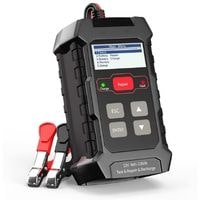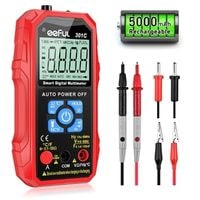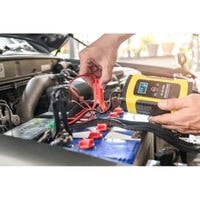How to test a battery charger. Knowing how to test other things with a multimeter, such as battery chargers, capacitors, transformers or even your own body can prove useful in a whole host of situations.
The procedure for testing any electronic device is similar regardless of the type you’re dealing with.
Connect one contact probe (the positive lead) of a digital multimeter/voltmeter to whatever terminal your “thing” has while the other probe (the negative lead) goes to something else.
Then check the meter display for what value it indicates there and make sure it’s within reasonable range if it gives a reading at all.
You’ll want to consult the manual for specifics on what those ranges are for each power source mains AC outlet 110-120V only.
How to test a battery charger

Plugin your charger into an electrical outlet. Attach your voltmeter unit to the charger and measure how long it takes until you get a full charge.
Measure how long the discharge takes. Finding out is easy. The battery charger can be tested.
Connect your battery charger
To find out whether or not your battery charger is putting out as much voltage as it’s supposed to, you’ll first need to make sure that the device is getting a power source.
Hook up the adapter to an AC outlet which will cause the charger to begin channeling electricity into your device, which you can measure through the use of a multimeter tool.
If your charger has its own On/Off switch, you can go ahead to flip it to the “On” position. A multimeter also referred to as a “voltmeter”, is an instrument that tests the levels of different voltages in electrical devices.
The price one pays for this instrument depends on its manufacturer and quality. You can get inexpensive models from any electronic store or even more expensive ones starting at $50-60 from well-established electronics makers.
Attach the Multimeter

Most multimeters come with a pair of detachable test probes that are used to measure electricity running through the poles of a battery or charger.
You can insert one of the orange probes into the “COM” port and then insert the red probe into the “V” port.
If you have an older model, it could be blue labeled “V” and green-labeled “COM.” In some cases, typically when test wires are being used from external probes, there may be no labeling on these ports at all.
Select “DC”
To measure the voltage output of an average battery charger, turn the dial on your multimeter to the “DCV” range. Determine the voltage you wish to test and enter that setting, if possible.
This will help you get ready for testing your DC supply by either setting off a small direct current (DC) signal or a small direct current voice coil set up.
To test both, such as an AA battery and an AC outlet, all you need to do is set it down in front of you and touch alligator clips at both ends of your device’s power wire onto two different points on your analog multimeter’s jack.
This can give you a comprehensive view of whether or not this kind of product is in optimal condition.
Connect the Black test Probe
If the charger you’re testing has a power supply cord, press the tip of the probe to a side of the metal prong at the end of the jack.
If you’re testing a receptacle charger like the kind used to reload rechargeable batteries, hold it to an exposed section of metal on the side of the charging chamber marked.
Hold the Red test Probe
Insert the tip of the probe into the barrel at the end of the power supply jack, which is what transmits power.
To take a reading when testing a receptacle charger, hold the test probe to an exposed section of metal on its side labeled “+” (red wires are inserted here).
If you accidentally get your contacts mixed up, the multimeter may display an incorrect reading (or it might produce no reading at all). Switch around the contacts and try again.
Check Multimeter’s display
This number on your battery charger indicates how many DC volts it puts out. The more DC volts (12 volts, 24 volts, etc.) that the mobile device/battery pack you’re charging needs to operate, the more voltage the charger will need to supply.
If you aren’t sure what type of DC volts your charging apparatus needs, consult a user guide or owner’s manual for your battery charger.
How to test a battery charger
Related Guides
